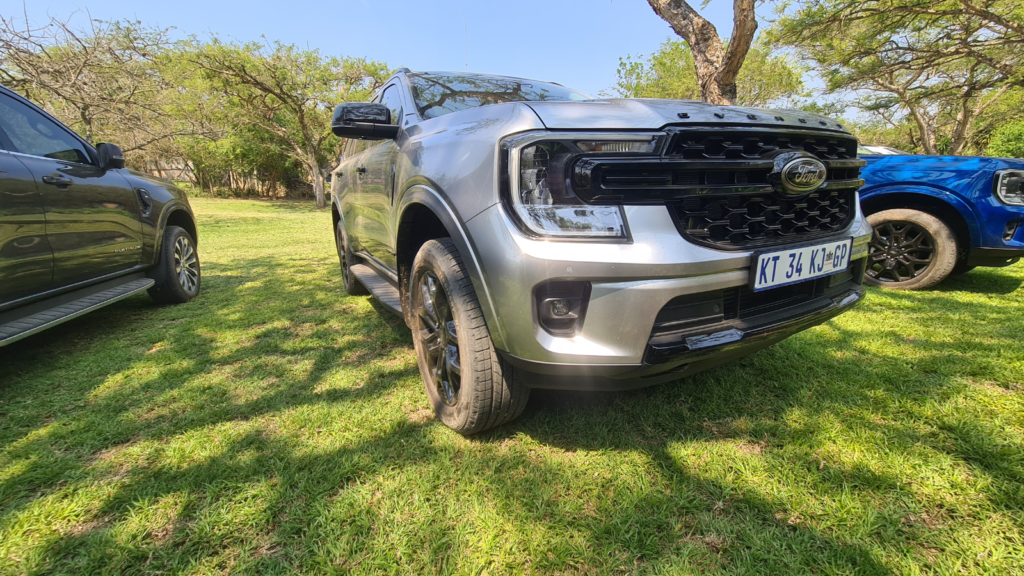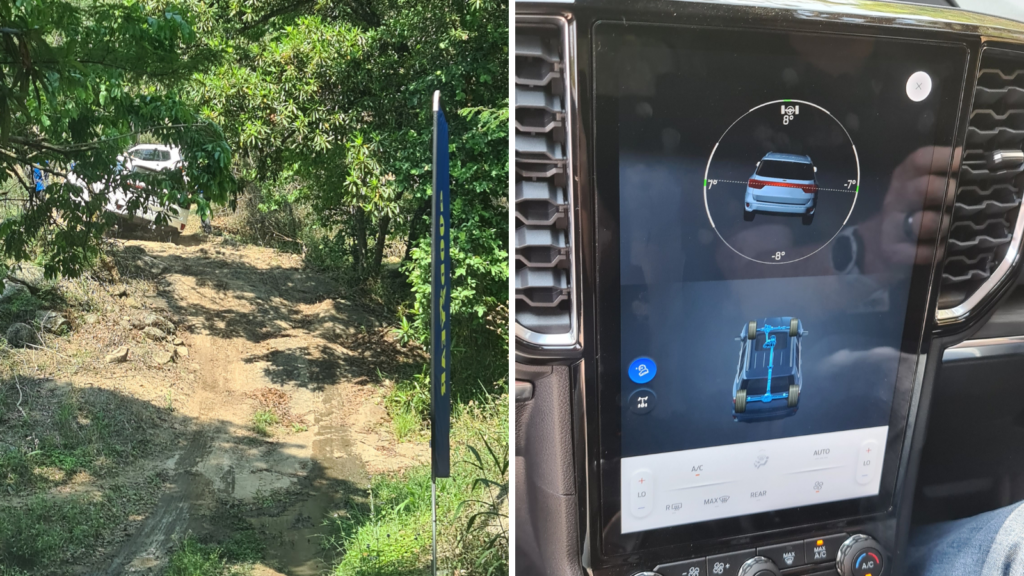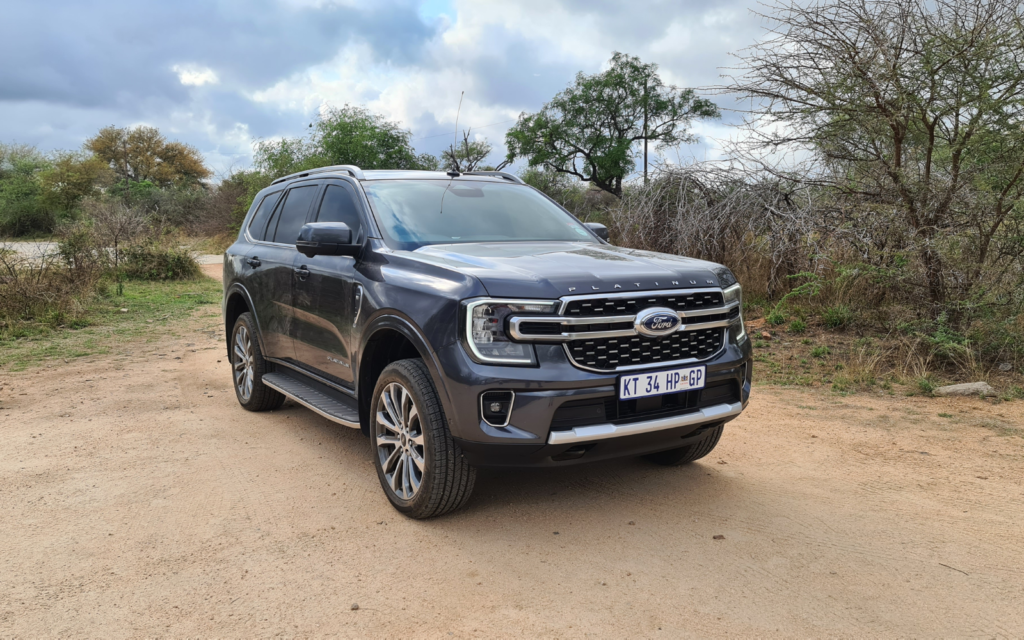Ford recently launched the third generation of its title contender in the adventure SUV segment, the Everest. We had the opportunity to gather some initial intel on whether Ford has done enough to bring the Everest – which last received an upgrade this large in 2015 – into the digital age.
Locally, it’s available in two derivatives. Ford’s 2.0-litre bi-turbo diesel engine returns in the Everest Sport while the Everest Platinum is sporting a shiny new 3.0-litre V6 turbodiesel engine, borrowed from the F-series bakkie range.
The engines aren’t the only things that have changed. Both the interior and exterior of the vehicle have as well. But are the changes enough to sway a potential buyer into picking the Everest over its competitors? Well, that depends.
Scaling Everest

The Sport and Platinum derivatives are the only locally available options but that might well change in a year or three when Ford next looks to refresh its Everest lineup. The two models are separated mostly by engine specs and feature sets.
The Sport, with its 2.0-litre bi-turbo diesel engine, is paired with a 10-speed automatic gearbox. This combo nets you 154kW of peak power output and 500Nm of torque.
The Platinum steps things up with its new V6 turbodiesel accompanied by the same 10-speed automatic transmission. These offer up higher peak outputs of 184kW and 600Nm. The increase also means the Platinum can tow more. Whether that’s a boat, camping trailer, or caravan, as long as it doesn’t weigh more than 3.5 tonnes, the Platinum will haul it.
The Platinum also receives an advanced always-on all-wheel-drive system. This is stepped down to a part-time electronic ‘shift-on-the-fly’ system in the Sport but still allows switching between 2H and 4H while in motion. You’ll need to come to a standstill to shift into 4L. If none of this makes sense, go tackle a 4×4 course. Preferably in someone else’s vehicle.

There are six off-road drive modes to choose from in both models and both feature an electronically-controlled rear differential lock. A dedicated off-road page on the infotainment screen handles e-diff activation and can also display a live feed from the front camera with a predictive overlay for drivelines. Also found here are steering angles and guides, along with vehicle roll and pitch angles.
Tough on the outside
Ford’s designers and engineers have toughened the Everest up by straightening out most of the curves and increasing its size. The wheelbase is longer, the track is wider, and ride height and ground clearance have increased. But, the most obvious change is the redesigned C-clamp daytime running lights.
Of the two models, the Sport is the more aggressive-looking with its blacked-out 20in alloys, grille, skid, and side plates. The Platinum opts for a more refined look with chrome accents and slightly larger 21in machine-face alloy wheels.
Adventuring into the future
Everest’s journey into the future is immediately apparent inside the cabin. “Crammed with tech” might be an understatement. A centre-mounted vertically-orientated 12in touchscreen seems like the go-to for car manufacturers seeking tech appeal, so both Everest models get one. The analogue dial cluster is swapped out for an 8in digital display in the Sport or a 12.4in cluster in the Platinum.
The new Everest comes with a factory-fitted modem so you can load it onto the FordPass app and manage functions like locating your vehicle, checking fuel and odometer readings, booking a service, remotely locking or unlocking the doors, and starting the engine. But there’s room for improvement. You can manually remotely start the vehicle or set up a scheduled start to cool it down on a hot day. But this only works if you remembered to pre-set the A/C to the setting you want. Proper remote climate control is still absent.
Onboard navigation rears its head again in the Platinum. The few people who don’t use Google’s suite of apps (Huawei users, for example) might find this helpful. But as with the EcoSport we tested in July, we opted to use Google Maps through Android Auto instead. Support for that and Apple CarPlay gets a wireless upgrade, as does smartphone charging.
Making life comfortable
Elsewhere in the cabin of the Platinum, you’ll find familiar premium features like heated and ventilated power-adjustable front seats with three memory presets. Your passengers, children, or pampered pets will be delighted to know that the second row of seats is heated as well.
Additionally, should your wayfarers need to charge their devices, there are USB-A and USB-C ports in the front and centre consoles coupled with a 400W inverter for powering larger devices. That’s handy, given the current state of Eskom.
Accessibility around the cabin has improved with the second row sliding further forward for a less awkward clamber to the back. Both the second and third rows collapse flat when you need extra luggage space or want to save money on rent.
Maybe too comfortable
Both models come standard with a host of driver assistance and safety technologies and these work well. A little too well, perhaps. Between the adaptive cruise control, lane-keeping aid and alert, and road edge detection with driver warning, we couldn’t help but feel a little redundant at times. We found ourselves turning some off so we could feel like we were in charge, instead of a co-pilot.
Ford says these features are “designed to take the stress out of driving and help drivers to remain focused”. Luckily, it was a stress-free driving experience, even with the driver assists disabled, thanks to the rather long list of safety tech like pre-collision assist with dynamic brake support and automated emergency braking. Admittedly, we didn’t test these first-hand. We don’t think our co-driver would’ve appreciated that at all.
You’ll find comfort in the Everest’s cabin whether you’re on a newly tarred road, a more typically South African road, or descending a 60-degree gravel slope on a produce farm in Mpumalanga – as we did during the event.
The test course featured a few steep climbs and slopes, a stray ant mound or two, and a particularly tricky axle-twisting stretch. We kept all of the driver assists on for this particular exercise and enabled hill descent control when needed. Unsurprisingly, our Everest Sport handled the test with nary a murmur or complaint.
Shortly thereafter we climbed into the Platinum for a lengthier road test and were immediately impressed by the new V6. Mentions of its inclusion conjured thoughts of a roaring, untameable beast. The truth stood in stark contrast.
It ran smoothly and quietly while adhering to SA’s road laws. When spirited overtaking was required, power was abundant and effortless. At no point did it feel strained underfoot, even with an open throttle. Although, that does come at a price.
Across the two-day adventure that included stop-start city driving, long stretches of freeway, bouts of off-roading, and low-speed animal-spotting crawls, our consumption averaged between 10-11l/100km. It’ll take some dedicated economical driving to reach Ford’s claimed 8.5l/100km. We’re not saying it’s impossible… but… good luck.
Invest in some patience
Unfortunately, it’s going to take some time before the majority of folks intent on the new Everest experience what we did, for two reasons. Firstly, they may find they need to save up for a few more months when they learn the price. The next-gen Everest Sport starts at R965,400 while the Platinum goes for R1,113,100.
Secondly, they could prove difficult to acquire. SA receives its Everest shipments from Thailand. But, thanks to the still-ongoing global semiconductor shortage, worsened by logistical challenges, you should expect delays. Having said that, Ford SA expressed optimism about its new offering.
“We are already seeing a high demand around the world for Next-Gen Everest, and we are confident that this new model will live up to expectations for all those who have reserved a vehicle. However, global supply chain challenges, including shipping logistics, are causing extended wait times across the industry,” says Neale Hill, president of the Ford Motor Company Africa Region.
